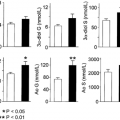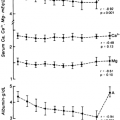IMPLANTATION
The embryo now undergoes implantation, which begins with attachment of the late blastocyst to the uterine tissue at a nidation site. The selection of this site is tightly regulated, because it usually occurs in a predictable manner, but little else is known. Implantation can be classified on the basis of the usual position of the site in the uterus and, hence, may be noninvasive and central, noninvasive and eccentric, or interstitial as in humans (Fig. 107-6). In humans, the embryo attaches to the lining of the uterine fundus, with the embryonic pole usually attaching to the antimesometrial lining. The endometrial cells of the uterus have microvilli on their luminal surfaces that begin to interdigitate with the microvilli of the trophectodermal cells. Pinocytosis (the cellular process of active engulfing of liquid) in the endometrial epithelial cells increases at this time and is thought to enhance or at least stabilize attachment, perhaps by removing uterine fluids from the attachment site. This pinocytosis is stimulated by progestins and inhibited by estrogens.21 Actual cell fusion between the embryonic trophectoderm and the uterine epithelium does not occur in most species. The presence of the blastocyst in the uterus undoubtedly provides some signal to the uterus and to the ovary to maintain the pregnancy.55 The blastocyst is capable of producing human chorionic gonadotropin, which supports the corpus luteum, and the luteal phase of human conception cycles maintains higher progesterone levels from day 3 through day 8 than in nonconception cycles.56,57 and 58
Stay updated, free articles. Join our Telegram channel

Full access? Get Clinical Tree





